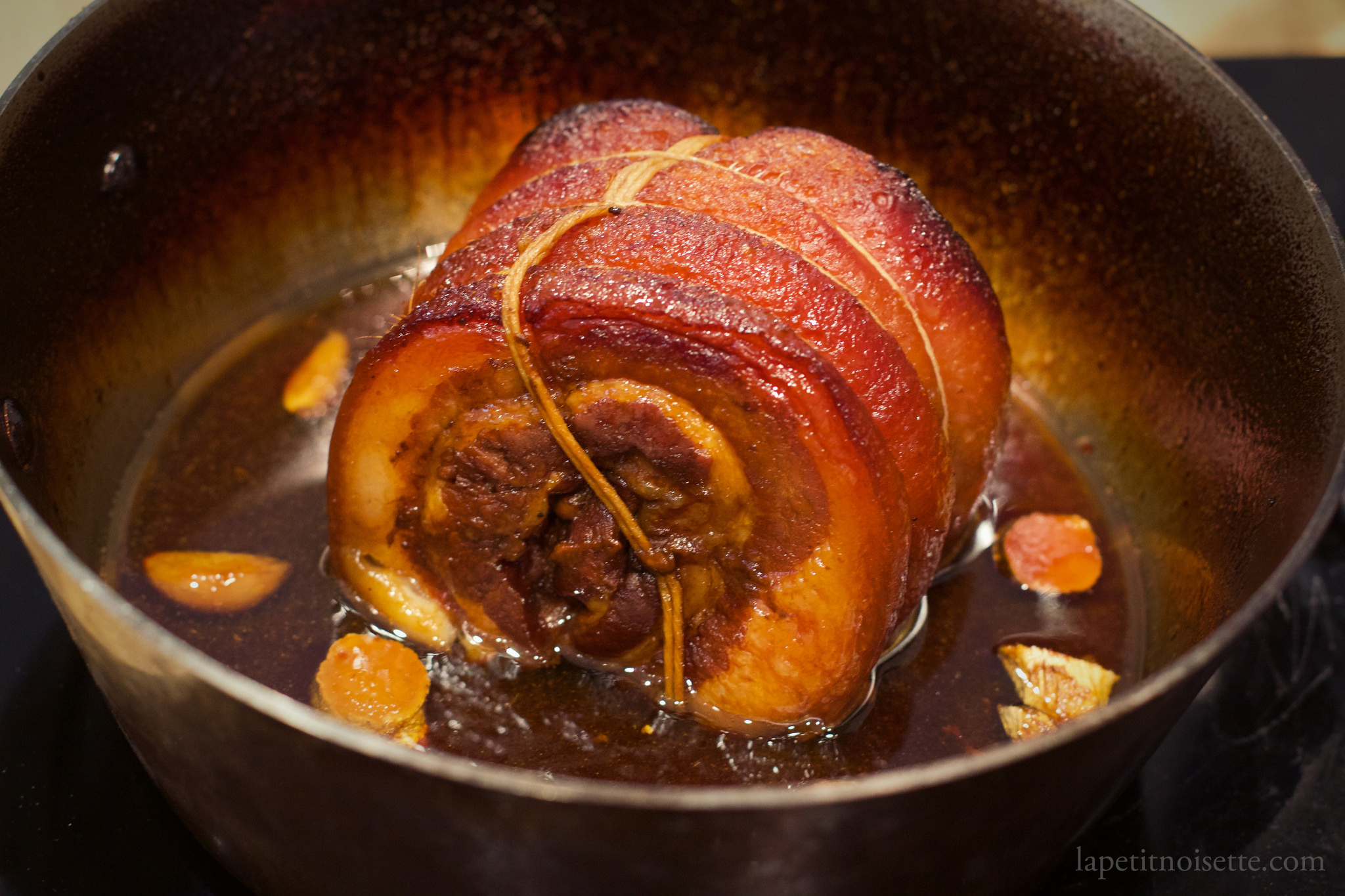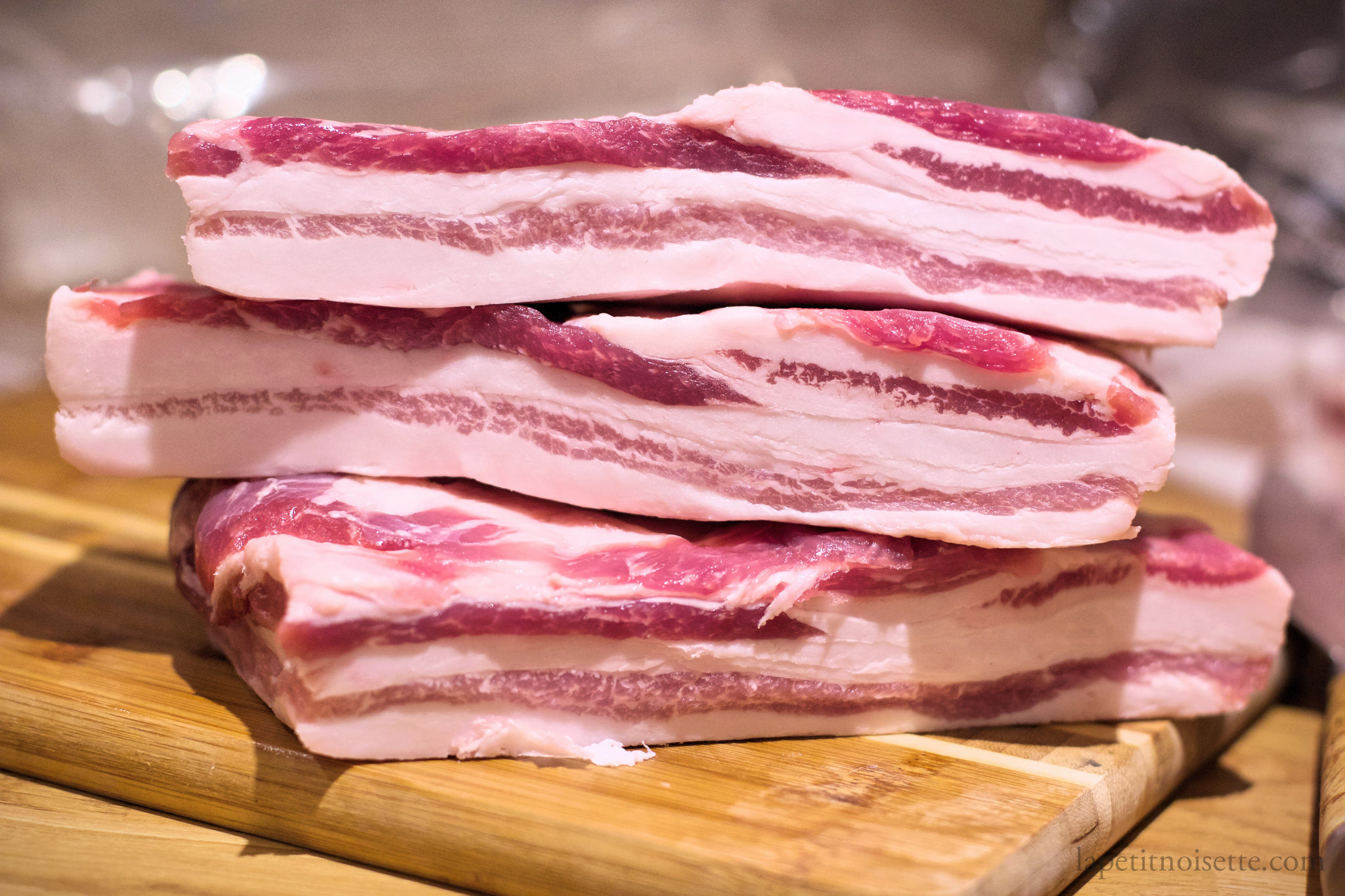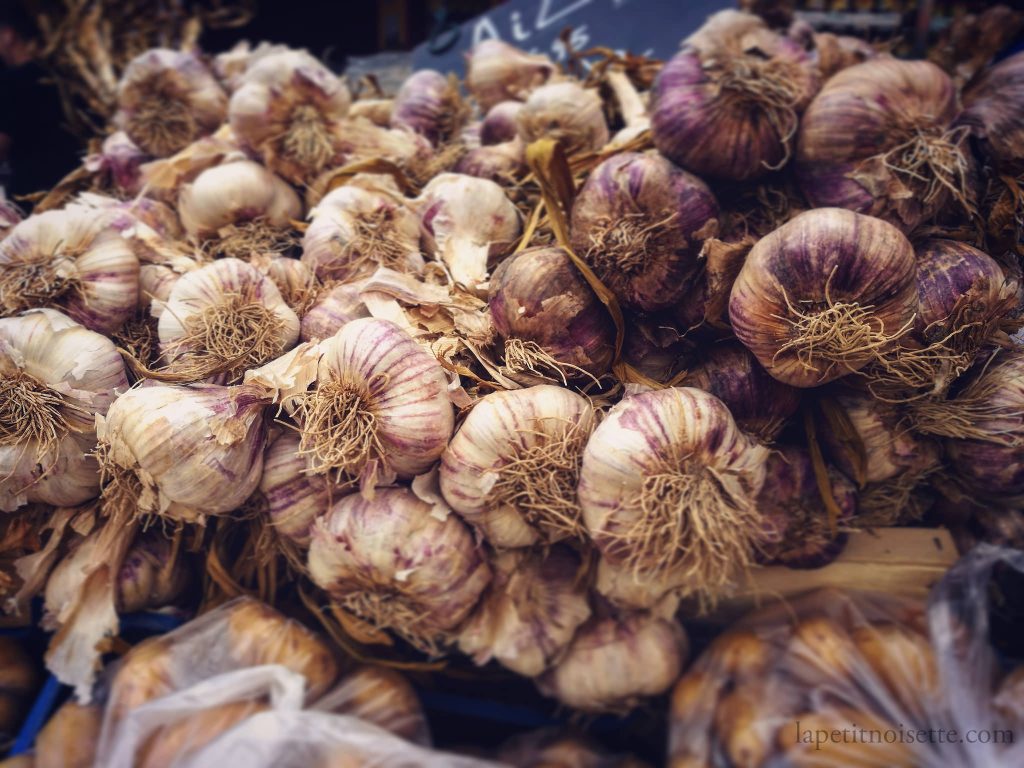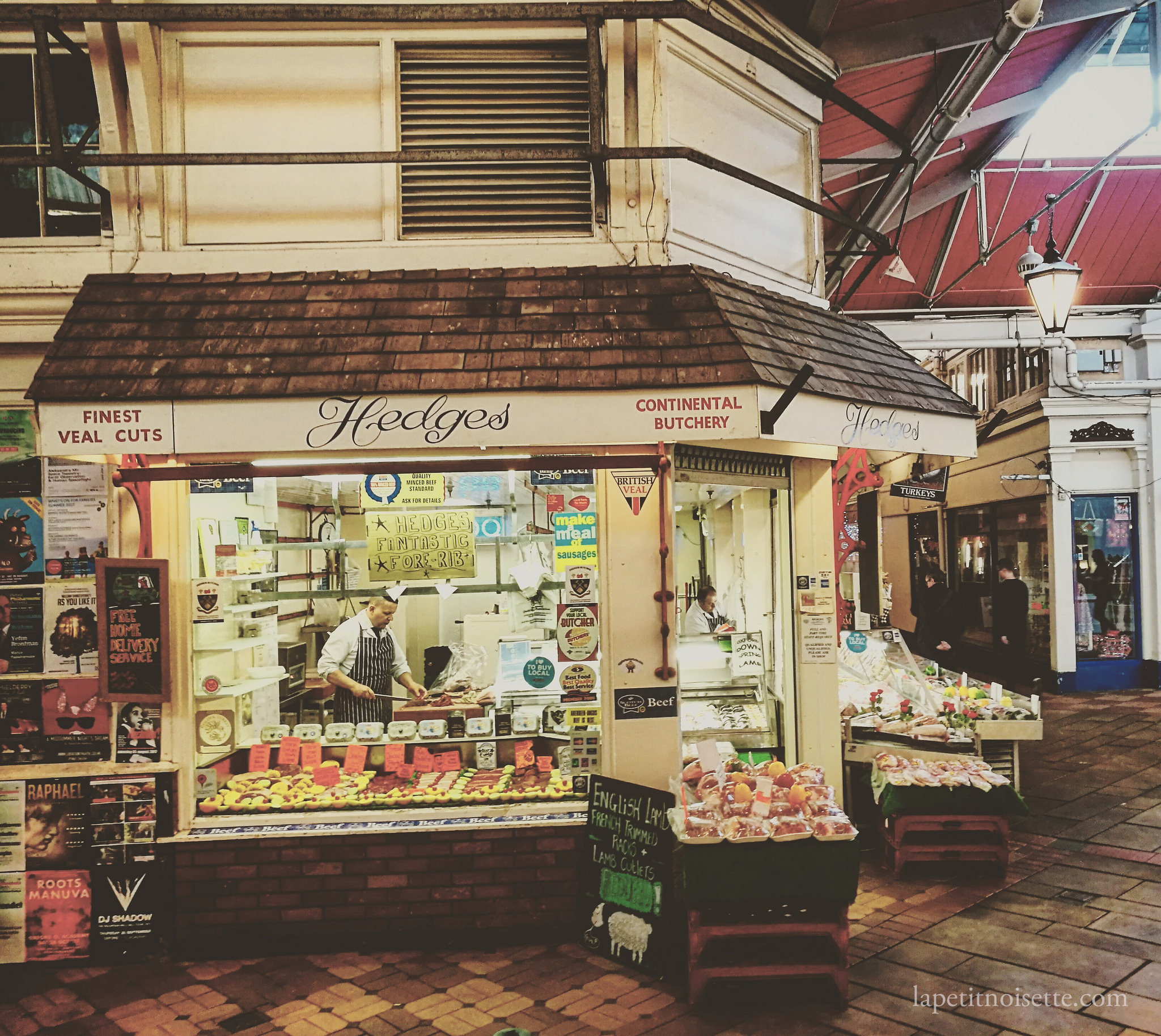チャーシュー

Before even opening the door to the kitchen, the glorious smell of melting pork fat coupled with the sweet and salty smell of simmering soy sauce is enough to make anyone salivate. This is a recipe for Japanese chashu made from Iberian pork, which is a Japanese adaptation to a barbecued pork dish that originated from China known as Char Siu. It is usually served as an accompaniment to ramen, and when done well, has the ability to take a simple bowl of ramen to a completely different level.
Traditional Chinese Char Siu cooked by barbecuing pork that has been previously marinated in hoisin sauce, honey and Chinese five spice powder. Red colouring is also sometimes added to the dish to give is a vibrant red finish that is visually appealing. In contrast to this, Japanese chashu is actually braised in a mixture of soy sauce, sugar and sake for long periods of times, to give a more tender mouth feels and less bold flavour profile. Japanese chashu can be marinated beforehand or not, with minimal effect on flavour.

Iberico Pork Japanese Style Chashu チャーシュー
- Pork Belly
- Iberico Pork Belly (Bellota grade)
- Salt
- Green Onions (Negi)
- Braising Liquid
- Tamari Soy Sauce
- Ginger
- Garlic
- Sugar
- Sake
- Water
- Maltose
- First, preheat the oven to around 160 degrees celcius.
- After that, we need to prepare the pork belly by trimming off the excess fat as well as removing the hair from the pork skin. This step is usually already done when you buy the pork belly but if not, you can use a blowtorch to burn off the remaining hair on the skin. This is done by waving the blowtorch back and forth, just enough to burn off the hair without cooking the skin.
- Next, season the underside of the belly generously with salt and pepper before rolling it up into a log and tying together with string. I personally prefer not to score the skin of the belly as we will be braising it compared to roasting it.
- In order to maximise the flavour of the belly, heat up some oil in the pot which you are going to use to braise the belly. Make sure this pot is oven safe. Dry the skin outside of the log using paper towels before searing the log all around in the hot all. Remember to also brown both ends of the log where the meat is exposed. Once seared, remove the pork belly log from the pot and set aside for the time being.

To serve, cut thin slices of the chashu, about a few millimetres thick, and serve with rice or ramen. The tricky part of this recipe is how much water to add to the pot. The amount of water you add to the pot is actually dependent on how water/steam tight the lid for your pot is. If the lid of your put is an extremely tight fit, less water is needed as the amount of water loss from the pot during the 3 hour braising duration in the oven will be fairly minimal. If you were to add a lot of water in this scenario, you would get a very diluted sauce. If your pot’s lid is not tight-fitting or it allows a lot of water to evaporate, add more water in order to prevent the sugar in the sauce from burning after all the water has evaporated. In a perfect scenario, you would want the amount of water (and thus sauce) remaining in the pot to be just right- where the sugars in the sauce have just caramelised and the sauce to have a consistency of a dark shiny glaze.

Another way to cook this dish is actually on a stove/fire. In this case, the more traditional method here utilises an Otoshibuta, which is a Japanese drop-lid made using wood that replaces the original lid of the pot. An Otoshibuta does not fit as snugly on the pot as a typical lid. In fact, it normally has a smaller diameter than the pot, thus allowing it to sit directly on the food in the pot. The reason for using an Otoshibuta is to slow down evaporation without completely stopping it. This is perfect for this dish as you would want the chashu to simmer while also simultaneously reducing the sauce. As it is also in direct contact with the food, it prevents rigorous boiling which may break up more delicate food. To cook chashu on the stove top, instead of tying up the pork belly into a log, simply use the whole piece as it is after searing, add in the liquid and then braise. Remember to still flip the belly occasionally and be extra careful of burning. If you do not have an Otoshibuta, you can always use the original lid for the pot or use a makeshift Otoshibuta using aluminium foil or baking paper shaped into a circle with holes punctured into it. The original point of tying the pork belly into a log shape is not only for aesthetic purposes, but also to make it easier to cut, as well as preventing too much loss of moisture from the meat, as the surface area of the meat is greatly reduced.
Now lets talk about Ibérico pork and what makes it so special. Ibérico pork comes from specially bred pigs knowns as Pata Negra that are raised in the Extremadura region in south-west Spain. These pigs get their name from their black hooves. In comparison to normal everyday pork, their taste is not only superior, but even the composition of their fat is better for our health. Their meat is also extremely well marbled, while also being able to retain a delicate flavour without being overpowered by fat. The secret behind their amazing taste lies in how they are raised. During the autumn, throughout a duration known as the Montanera, the pigs are allowed to roam freely in a agroforestry system known as a Dehesa, which is an area of land that is planted with a variety of trees such as oak and cork trees. Here the finest Pate Negra pigs eat exclusively the acorns produced by the oak trees in the Dehesa. A Dehesa is extremely valuable to the farmer as it not only produces the acorns eaten by the pigs, but also serves as a source of wild mushrooms, cork for wine bottles and oak for barrels. To ensure that every pig gets enough food, a swine herder guides the pigs around the field, using a stick to knock acorns off the oak trees.

These acorns consumed by the pigs are rich in oleic acid, a type of unsaturated fat that is also found in olive oil. In an almost perfect example of the phrase ‘you are what you eat’, oleic acid can make up more than half of all fat found in Ibérian pigs that feed on these acorns. This not only makes Ibérico pork substantially healthier to eat, but most gives them a unique taste, making them dubbed as ‘olives with legs’ by the locals. In order to receive the protected designation of origin certification, or Denominación de Origen, the pigs not only have to been allowed to roam freely in the Dehesas, but must also have been on a diet that consist of varying amounts of acorns depending on the classification. The most prestigious classification is that of Ibérico de Bellota, whereby the pigs are fed exclusively on acorns, with the next classification being Ibérico de Cebo, where the pigs feed on a mix of acorns and feed approved by the Denominación de Origen. Of course if you can’t find Ibérico pork belly, this dish works perfectly fine with normal pork but in my opinion, nothing can beat the flavour of the real original Ibérian pig that has been allowed to roam free in the spanish Dehesas.
Excellent post. I love the garlic shot. It brings me back to the markets of southern France in late summer.
[…] the topping, the classic toppings are pork chashu, marinated eggs, naruto (fish cake), bamboo shoots, chopped green onions, sesame seeds, mayu (black […]
Am I missing a link or list of ingredient amounts for the braise? I am not seeing it. My mouth is watering, but I don’t want to mess up by guessing amounts.